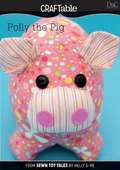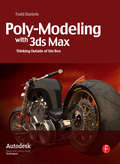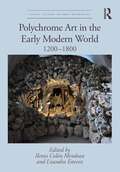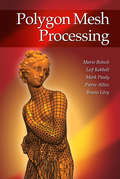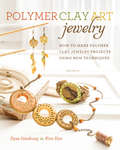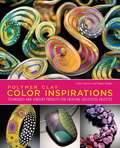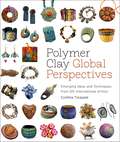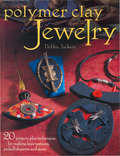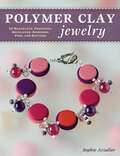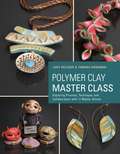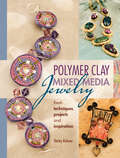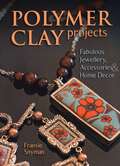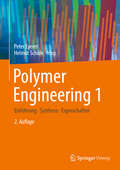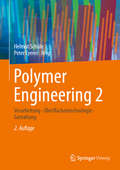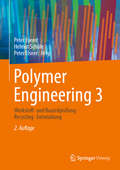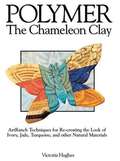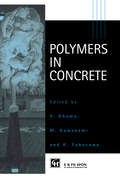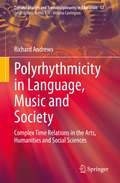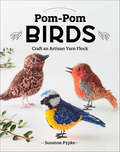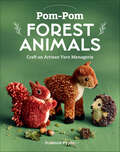- Table View
- List View
Polly the Pig
by Melanie HurlstonWatch out, Polly the Pig's about, and she's a powerhouse of energy, so you're in serious danger of being bowled over by her. Don't let her rather stout physique fool you - she's a real whiz kid, bustling around the place and eager to get involved in anything that's going down. In fact, she's a bit of a speed junkie. You've been warned - keep those skateboards securely under wraps!
Poly-Modeling with 3ds Max: Thinking Outside of the Box
by Todd DanielePolymodeling is a modeling technique used in 3d modeling. Unlike box modeling, or other forms of modeling where you start out with a basic form or primitive object that determines the mass of an object, artists can use the polygon (the basic building block of all of the primitives available in 3ds Max). This approach allows for more control over the flow, placement and detail of the meshes that are built. Placement of vertices/points, edges and all other sub-elements that build our models is determined by the user, rather than pre-determined by a computer generated primitive.This book is a collection of tips, tricks and techniques on how to create professional models for advertising on T.V and the web. The author has tons of industry experience using Max toward this end, and he shares the secrets of his trade. As Production Modeler for some of today's hottest studios (including GuerillaFx, Coke Zero, MTV, Old Navy, Nike, Target, HP) Todd Daniele brings real-world experience to the book. Daniele teaches the technical aspects of polymodeling, while showing how to ultimately create content in a dynamic, efficient manner.Associated web site offers instructional files that show the models in progressive stages of development; plus a supporting internet forum: readers can log-on to this forum to ask questions or comment on anything covered in the book.
Polychrome Art in the Early Modern World: 1200–1800 (ISSN)
by Lisandra Estevez Ilenia Colón MendozaThis book focuses on the techniques and materials of polychromy used in early modern Europe and the Americas from 1200 to 1800.Taking a trans-cultural approach, the book studies the production of polychrome sculptures, panels, and altarpieces, as well as colored terracotta. The book includes chapters on treatises and contracts that reveal specific use of pigments, distribution of workshops, collaborations between specialized artists, and artistic programs centered on the use of color as an agent.The book will be of interest to scholars working in art history, art conservation, early modern history, sculpture, colonialism, material culture, and European studies.
Polygon Mesh Processing
by Mario Botsch Leif Kobbelt Mark Pauly Pierre Alliez Bruno LevyGeometry processing, or mesh processing, is a fast-growing area of research that uses concepts from applied mathematics, computer science, and engineering to design efficient algorithms for the acquisition, reconstruction, analysis, manipulation, simulation, and transmission of complex 3D models. Applications of geometry processing algorithms alrea
Polygon Quilts Pattern
by Jennifer SampouGeometry has never been so much fun! This free-spirited twist on the applique hexie quilt is playful, creative, and forgiving! The improv approach is super easy, and the quilt comes together quickly using half-square triangles made from 5" precut charm squares or scraps from your fabric stash. This pattern combines the freedom of improve with the basic structure of a simple layout, materials list, and instructions for 2 quilts. • Play around with this quick and fun pattern to create a stunning quilt • Get inspired with multiple polygon layout options for quilts • From the best-selling designer behind the Octagon Shimmer Quilt Pattern
Polymer Clay
by Jacqueline GikowPolymer clay can be used for numerous projects, and this comprehensive guide shows you how to unleash polymer clay's functional side. Features more than 20 inspiring projects, including a book cover, puppet and lamp, as well as a wide array of techniques and creative approaches. Also showcases pieces by some of the world's best-known polymer clay artists.
Polymer Clay Art Jewelry: How to Make Polymer Clay Jewelry Projects Using New Techniques
by Ilysa Ginsburg Kira SlyeMake gorgeous polymer clay jewelry with instruction and inspiration from polymer clay designers Ilysa Ginsburg and Kira Slye. The unique and artistic techniques in Polymer Clay Art Jewelry provide new, versatile ways for creating fantastic necklaces, earrings, bracelets and more! 16 beautiful, eye-catching jewelry projects. 4 creative themes that appeal to a range of styles. Polymer clay techniques that use unusual tools and tricks. Fun and inspiring for both beginner and intermediate levels.
Polymer Clay Color Inspirations: Techniques and Jewelry Projects for Creating Successful Palettes
by Maggie Maggio Lindly HaunaniLindly Haunani and Maggie Maggio are renowned for their courses and workshops on color as well as for their outstanding polymer clay work. In this book, they offer instruction and inspiration that focuses on polymer clay as a learning tool that readers can use to explore their own color instincts and preferences and develop their own palettes.Each chapter investigates a specific color principle, with the discussion supported by a related exercise, a "studio tool" assignment or demonstration, a polymer clay jewelry project, and a profile of a prominent polymer clay artist. Sample topics include:*The Complexity of Color*Three Properties of Color*Choosing Your Palette*Mixing Colors That Flow*Matching Colors with Precision*Games Colors Play*Orchestrating Color Combinations*Color Composition: Placement and Proportion*Playful Patterns*Tantalizing TexturesFrom the Trade Paperback edition.
Polymer Clay Global Perspectives: Emerging Ideas and Techniques from 125 International Artists
by Cynthia TinappleExplore the World--in Polymer Clay!Polymer artists are connected like never before. As the acclaimed curator of the popular blog PolymerClayDaily.com, Cynthia Tinapple brings together 115 diverse artists from around the world to showcase the work of this new international community. Polymer Clay Global Perspectives invites you to explore the trends and cutting-edge styles that are influencing the future of this medium. In this masterful collection, you'll find: · Tips to create meaningful art that reflects your personality and vision· Behind-the-scenes profiles of 13 innovative artists in their studios· Step-by-step projects by contributors who share their signature methods, such as mokume gane,extruded canes, and adapted glass-blowing techniques· Galleries showcasing the best of the best polymer work in jewelry, miniatures, sculpture, and much moreWith artists including Kim Korringa, Shay Aaron, and Fabiola Perez offering their expertise, you'll find endless inspiration to take your art to the next level. Begin your own journey through the new landscape of contemporary polymer. A world of possibilities awaits.
Polymer Clay Jewelry
by Debbie JacksonCreate stunning jewelry with imaginative ideas!In Polymer Clay Jewelry, Debbie Jackson shows you how to create 20 gorgeous projects with an array of polymer clay and jewelry-making techniques. Using embellishments, textures, liquid polymer clay and canes, you'll create one-of-a-kind pieces including:Hinged Dragonfly PendantOriental Fan HatpinEmbedded Bead EarringsEggshell Mosaic BroochSnakeskin BangleEach project includes step-by-step instructions, complete supply lists, and full color photos to help you achieve professional results. Jackson also includes an inspirational gallery of polymer clay jewelry pieces using techniques featured in the book.Whether you're a beginner or a seasoned enthusiast, this fresh approach to polymer clay techniques will provide the skills and creative spark you need to create truly extraordinary accessories.
Polymer Clay Jewelry: 22 Bracelets, Pendants, Necklaces, Earrings, Pins, and Buttons
by Sophie ArzalierPolymer clay is a fun and easy medium for creating colorful jewelry. It can be easily molded and baked to create a myriad of beautiful jewelry designs: bracelets, necklaces, brooches, buttons, and earrings. This book tells you everything you need to know to get started and gives you 18 projects to inspire you and get your creative juices flowing!Sculpt polymer clay with your hands or with tools, add texture, mix in little elements such as sequins, and even decorate it with paint, ink, or patinaBasic instructions, along with detailed information on tools and materials to get you started working with polymer clayStep-by-step photo-illustrated instructions
Polymer Clay Master Class: Exploring Process, Technique, and Collaboration with 11 Master Artists
by Judy Belcher Tamara HonamanLearn the Signature Techniques of Top Polymer Clay ArtistsPolymer Clay Master Class offers you a close-up look at the creative processes of eleven acclaimed polymer clay artists as they share their expertise with one another and you. Judy Belcher and Tamara Honaman bring together these talented artists for the first time, offering their individual techniques and then documenting how they inspire and challenge one another in the creation of collaborative pieces. In five lessons with sixteen guided projects, you will gain an understanding of the polymer clay skills you've always wanted to master, such as:* Creating with sculpture, canework, and imitative techniques* Altering the surface with carving, transfers, imprint, and silk screening* Incorporating mixed media, such as metal, wood, and fiber* Designing using cold connections, hollow and lightweight forms, kinetic construction, and jewelry-finishing techniques* Pushing the boundaries of the Skinner Blend technique* Collaborating with fellow artists to open up new creative possibilitiesWith contributors including Leslie Blackford, Cynthia Tinapple, Lindly Haunani, Sarah Shriver, and many others, you have a front-row seat to the world of innovative polymer clay art. Challenge your assumptions about methods, style, and collaboration, and get ready to start on your own creative journey. Also available as an ebook
Polymer Clay Mixed Media Jewelry: Fresh Techniques, Projects and Inspiration
by Shirley RufenerPolymer clay is one of the most versatile craft projects on the market -- you can cut, carve, stamp, mold, sculpt and add texture, all to create individualized jewelry. With easy-to-follow step-by-step instructions, and the author's "can do" attitude, success is a sure bet. Shirley Rufener will guide you through basic techniques and 25 projects. Discover how to simulate the look of glass, enamel, fine porcelain and chalked ceramics, without the use of an expensive kiln. As a bonus, techniques include creating your own homemade, translucent, custom rubber stamps to use on clay and for traditional rubber-stamping.
Polymer Clay Projects
by Fransie SnymanCreative projects using polymer clay in jewelry, home décor, and more. Includes basic techniques for working with polymer clay and instructions for making 18 different styles of canes.Step-by-step instructions for 30 appealing projects such as jewelry, picture frames, coasters, keychains, buttons, and moreExplains basic tools and techniques for working with polymer clay, including conditioning clay, marbling, mixing colors, making clay roses, and creating a "skinner blend"Instructions for making 18 different geometric and floral canes
Polymer Clay for Beginners: Inspiration, Techniques, and Simple Step-by-Step Projects for Making Art with Polymer Clay
by Emily ChenStart making beautiful art with this step-by-step guide to making trinkets, animals, plants, and more using this fun, easy, and kiln-free craft.Polymer Clay for Beginners introduces artists, art hobbyists, and polymer clay enthusiasts to the versatile, accessible polymer clay medium. Because polymer clay does not require the use of a kiln and needs only baking in the oven, it is an easy, approachable art form for even the most inexperienced artist to learn, as well as kids, families, teachers, and anyone else looking for a fun, boredom-busting hobby or craft.Professional artist and owner of Cat Bear Express, Emily Chen, demonstrates how to make adorable animal figurines, flowers, cookies, cakes, beads, and more through easy step-by-step projects. Each project features colorful, styled photographs demonstrating how finished pieces can be used, displayed, and gifted. A comprehensive tools and materials section and detailed information on techniques, baking, and glazing guide artists in their quest to become polymer clay pros.A modern approach to sculpture art, polymer clay is the perfect choice for beginners and crafting enthusiasts.The Art Makers series is designed for beginning artists and arts-and-crafts enthusiasts who are interested in experiencing fun hands-on mediums, including embroidery and papier-mache.
Polymer Engineering 1: Einführung, Synthese, Eigenschaften
by Peter Eyerer Helmut SchüleDas Fachwissen über Technologien im Polymer Engineering ist neben dem Nachschlagewerk ''Domininghaus'' (Kunststoffe – Eigenschaften und Anwendungen) als Fach- und Lehrwerk zugleich Referenz für die industrielle Produktion und den Einsatz von Polymerwerkstoffen. Wichtige Abschnitte wie Oberflächentechnologien für Kunststoffbauteile und die Prüfung von Kunststoffen und Bauteilen wurden ergänzt um ein neues Kapitel über synthetische und natürliche Polymere und Faserverbundwerkstoffe. Den Grundlagen zum Extrudieren, dem Blasformen und Kalandrieren, den Polyurethanschäumen, der Mikrowellentechnologie, dem Rapid Prototyping und Molded Interconnected Devices, der Plasmatechnologie und den Trocknungsverfahren, konstruktives Gestalten, Fügen und Verbinden, Berechnungsansätze und Simulation, den Bauteilkosten, den Prüfungen an Thermoplasten/Duroplasten/Elastomeren und der Produktqualifikation sind weitere aktualisierte Abschnitte gewidmet. Ausgewählte Technologien werden zusammengefasst dargestellt.Band 1 des dreibändigen Werkes beinhaltet die Einführung und behandelt die Synthese von Polymeren sowie deren Eigenschaften.
Polymer Engineering 2: Verarbeitung, Oberflächentechnologie, Gestaltung
by Peter Eyerer Helmut SchülePolymere in technischen Produkten können unter ganzheitlicher Betrachtung nachhaltig und sicher eingesetzt werden.Für Werkstoffe, Komponenten und Produktsysteme gibt dieses Werk nachhaltige Antworten auf die wichtigen technischen, wirtschaftlichen, ökologischen und sozial relevanten komplexen Fragestellungen. Der Inhalt wurde gegenüber der Vorauflage sorgfältig bearbeitet und erheblich erweitert. Die Gliederung des Werks umfasst auch die Gestaltung von Kunststoffbauteilen, die Oberflächentechnologien für Kunststoffbauteile und die Prüfung von Kunststoffen und Bauteilen. In den Ausführungen gibt es umfangreiche Informationen, Übersichten und Ergänzungen zum Extrudieren, Blasformen, Kalandrieren, Polyurethanschäumen, zur Mikrowellentechnologie, zu additiven Verfahren, über Molded Interconnected Devices, Plasmatechnologie, Trocknungsverfahren, zum Gestalten, Fügen und Verbinden, Berechnungsansätze und Simulation, über Bauteilkosten, sowie Prüfungen an Thermoplasten/Duroplasten/Elastomeren und zur Produktqualifikation. Ausgewählte Technologien werden zusammengefasst dargestellt.Band 2 des dreibändigen Werkes behandelt die Verarbeitung von Polymeren, Oberflächentechnologien sowie die Entwicklung und Gestaltung von Bauteilen.
Polymer Engineering 3: Werkstoff- und Bauteilprüfung, Recycling, Entwicklung
by Peter Eyerer Peter Elsner Helmut SchülePolymere in technischen Produkten können unter ganzheitlicher Betrachtung nachhaltig und sicher eingesetzt werden.Für Werkstoff, Komponenten und Produktsysteme gibt dieses Werk nachhaltige Antworten auf die wichtigen technischen, wirtschaftlichen, ökologischen und sozial relevanten komplexen Fragestellungen. Der Inhalt wurde gegenüber der Vorauflage sorgfältig bearbeitet und erheblich erweitert. Die Gliederung des Werks umfasst auch die Gestaltung von Kunststoffbauteilen, die Oberflächentechnologien für Kunststoffbauteile und die Prüfung von Kunststoffen und Bauteilen. In den Ausführungen gibt es umfangreiche Informationen, Übersichten und Ergänzungen zum Extrudieren, Blasformen, Kalandrieren, Polyurethanschäumen, zur Mikrowellentechnologie, zu additiven Verfahren, über Molded Interconnected Devices, Plasmatechnologie, Trocknungsverfahren, zum Gestalten, Fügen und Verbinden, Berechnungsansätze und Simulation, über Bauteilkosten, sowie Prüfungen an Thermoplasten/Duroplasten/Elastomeren und zur Produktqualifikation. Ausgewählte Technologien werden zusammengefasst dargestellt.Band 3 des dreibändigen Werkes beinhaltet die Werkstoff- und Bauteilprüfung, Betrachtungen zum Recycling und zur Nachhaltigkeit sowie einen Ausblick auf laufende Entwicklungen.
Polymer Photogravure: A Step-by-Step Manual, Highlighting Artists and Their Creative Practice (Contemporary Practices in Alternative Process Photography)
by Clay HarmonPolymer Photogravure: A Step-by-Step Manual Highlighting Artists and Their Creative Practice is a three-part book on the non-toxic process of making ink-on-paper intaglio prints from continuous-tone photographs using water-etched photopolymer plates. Author Clay Harmon provides clear and easy to understand instructions that will enable anyone to successfully make a photogravure print. By quantifying the sensitometric behavior of polymer plates, Harmon has developed a methodical approach which will enable a new printmaker to produce plates in their own studio with a minimum of time and wasted materials. Section One provides a straightforward guide to setting up the polymer photogravure studio. Section Two covers a step-by-step method of making the print from start to finish. Section Three showcases contemporary artists’ works, illustrating the variety and artistic breadth of contemporary polymer intaglio printmaking. The works in these pages range from monochrome to full color, and represent a variety of genres, including still lifes, portraits, nudes, landscapes, urban-scapes and more. Featuring over 30 artists and 200 full-color images, Polymer Photogravure is a most comprehensive overview of this printmaking process in print. Key topics covered include: Studio safety Equipment and supplies, evaluated from both a cost and utility point of view A brief discussion of the types of ink-based printing Aquatint screen considerations Image preparation and positive printing on inkjet printers Paper preparation A simple and efficient polymer plate calibration process that minimizes wasted time and materials A straightforward inking, wiping and printing method Advanced printing techniques such as chine collé, à la poupée, and printing on wood Troubleshooting guide to platemaking and printing problems Tips on editioning and portfolios A visual survey of the range of artistic expression practiced by contemporary artists Sources for supplies and recommended reading Polymer photogravure plates enable an artist to use an almost-infinite range of image color and papers to make a print. The finished prints are extremely archival, consisting of only ink and paper. With Harmon’s instructions, continuous tone intaglio prints are within the reach of all.
Polymer The Chameleon Clay
by Victoria HughesExplore the versatility and beauty of polymer clay! In this new book, author Victoria Hughes shows readers an amazing array of finishes for this magical medium. Hughes presents, in detail, how polymer clay can imitate various materials including ivory, jade, coral, shell, onyx, and turquoise through assorted finishing, shaping, baking, and molding techniques. Eighteen unique and stunning projects, including an ivory pendant and an accordion-style jade book, are featured and illustrated by 250 beautiful, step-by-step photographs and detailed line drawings. A gallery of finished pieces by the author and more than 10 other skilled artists offers inspiration for readers to go beyond what is presented to make their own unique creations. Hughes, a well-known polymer clay artist, invented these techniques and teaches them nationwide. New, inventive, and amazing techniques to make polymer clay imitate more than 10 different materials Gorgeous photos of completed pieces to inspire creativity Complete information and step-by-step instructions for creating each look
Polymers in Concrete
by Yoshihiko Ohama Makoto Kawakami Kimio FukuzawaIncreasing attention is being given to the use of concrete-polymer composites as high performance and multi-functional materials in the construction industry, as well as in mechanical, electrical and chemical engineering. Particular interest is being given to these materials in Japan and other East Asian countries. This book forms the proceedings o
Polynesian Mythology: The Myths, Legends, Songs and Ancient Traditional History of the New Zealanders and Pacific Islanders
by Sir George J Grey“Sir George Grey was among the first chroniclers to explore Hawaii and the South Sea Isles with an aim of writing down the local legends and myths - this collection contains the amazing results of his journey.It was not the author's original plan to record the myths and legends of the Polynesian people - a government posting in New Zealand, and his subsequent encounters with natives and their chieftains, spurred an interest in the region's rich storytelling history. Many chieftains would quote different proverbs and narratives in common, summarizing the deeds of heroes such as Maui and Tawhaki. Many of the myths and legends reflected the Polynesian society's maritime nature - prowess upon the seas, be it in intrepid sailing or hunting great beasts of the deep, is a recurring theme.The peoples of Polynesia were spread over thousands of miles of island chains in the Pacific Ocean, and were mindful of the great distances their boats had covered. The discovery of New Zealand itself was subject to a legendary story; it being an island far greater in size than any discovered before. Tales of rituals and magic connected with nature leads Sir Grey to speculate about some arcane link between Polynesia and ancient Mexico - at the time, the supernatural qualities found in this lore were considered barbarous, and ignoble in the face of the Christianity of Western explorers.”-Print ed.
Polyrhythmicity in Language, Music and Society: Complex Time Relations in the Arts, Humanities and Social Sciences (Cultural Studies and Transdisciplinarity in Education #12)
by Richard AndrewsThis book addresses the complex time relations that occur in some types of jazz and classical music, as well as in the novel, plays and poetry. It discusses these multiple levels of rhythm from a social science as well as an arts and humanities perspective. Building on his ground-breaking work in Re-framing Literacy, A Prosody of Free Verse and Multimodality, Poetry and Poetics, the author explores the world of multiple- or poly-rhythms in music, literature and the social sciences. He reveals that multi-layered rhythms are uncommon and little researched. Nevertheless, they are important to the experience of art and social situations, not least because they link physicality to feeling and to decision-making (timing), as well as to aesthetic experience. Whereas most poly-rhythmic relations are felt unconsciously, this book reveals the complex patterning that underpins the structures of feeling and of experience.
Pom-Pom Birds: Craft an Artisan Yarn Flock
by Susanne PypkeCreate cute and realistic pom-pom birds with step-by-step instructions. Adorable crafting has never been simpler; with just a few materials, you can make these cute Pom-pom Birds! They’re easy to craft with detailed, step-by-step instructions, and the finished birds are too adorable to only make one. Soon, you’ll have your own flock! From robins and finches, to a woodpecker and an owl, you’ll create adorably fluffy little birds that add a touch of fun to any room. This book offers all the tips, instructions, and images you need to make your own tiny flying friends. Choose from 18 simple and adorable birds, including a brightly colored Greenfinch and an impressive Long-Eared Owl Easy step-by-step instructions make sculpting these yarn creatures simple Finished projects are artisan quality––great for home decor, gifts, and holiday decor
Pom-Pom Forest Animals: Craft an Artisan Yarn Menagerie
by Susanne PypkeCraft whimsical, fluffy Pompom forest animals with a realistic finish! Create an artisan craft project with detailed instructions that will make you smile at every stage—perfect whether you're a creative enthusiast or new to pom-pom creations. There are 12 different forest animal projects that include a deer, fox, rabbit, owl, squirrel, and many more! This book offers all the tips, instructions, and images you need to make your own forest of friends. Instructions include how to create a furry texture from yarn scraps and trim materials to sculpt and define each animal’s unique shape. Get creative today with Pom-pom Forest Animals and make something special!
